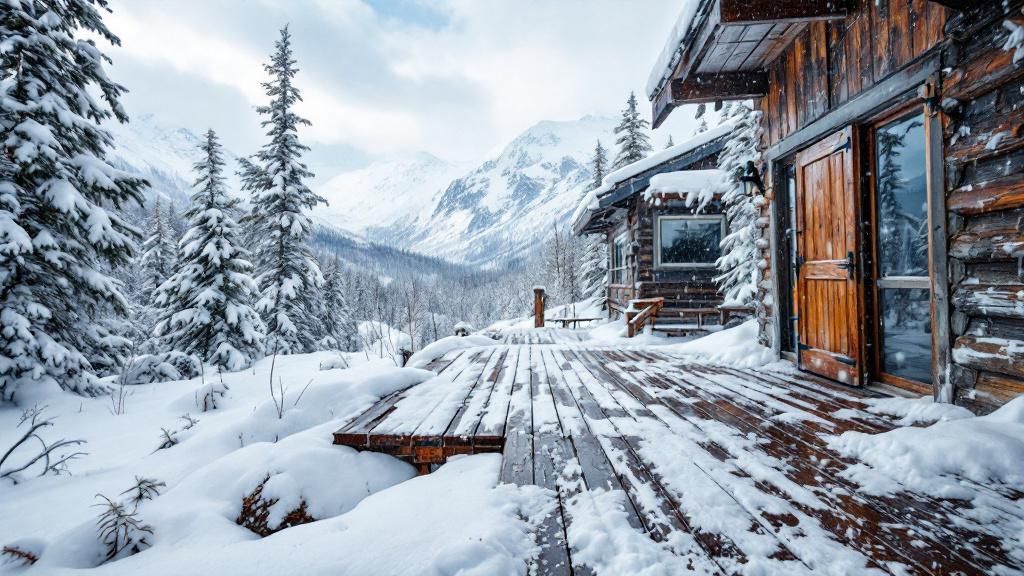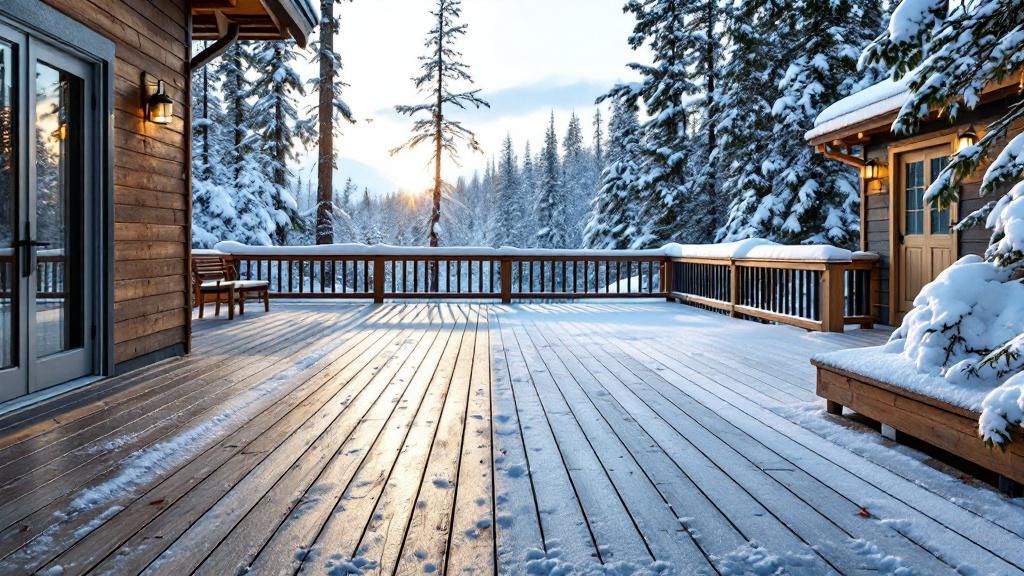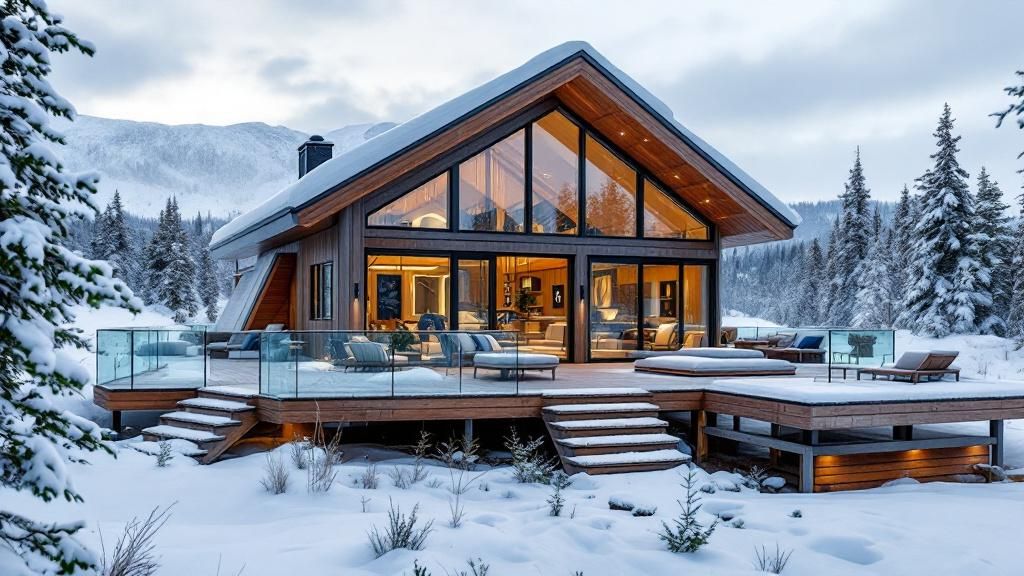
Building Decks That Last: Overcoming Alaska’s Weather Challenges
Anchorage residents know that outdoor living spaces are more than just aesthetic luxuries—they’re year-round assets. But with Alaska’s harsh winters, unpredictable rainfall, and constant freeze-thaw cycles, decks face unique challenges that homeowners elsewhere may never encounter. To make your investment worthwhile, understanding how weather impacts deck design, materials, and maintenance is essential.
The Harsh Reality of Alaska’s Climate
Unlike the milder Lower 48 states, Anchorage experiences extreme cold, heavy snow loads, and dramatic temperature swings. These conditions cause wood to expand and contract, accelerate moisture damage, and shorten the lifespan of deck stains and protective coatings. Without careful planning, a deck can quickly deteriorate, leading to costly repairs.
Moisture is the biggest culprit. Snow and rain seep into porous surfaces, leading to rot, mold, and mildew. Freeze-thaw cycles exacerbate the damage by expanding trapped moisture within wood fibers. For this reason, selecting durable materials and following strict installation techniques are non-negotiables in Alaska.
Choosing the Right Materials
When it comes to deck building in Anchorage, materials matter just as much as design. Here are the primary contenders:
-
Composite Decking
Composite materials offer excellent durability, resisting cracking, splitting, and warping. They also require minimal maintenance, making them a practical option for busy homeowners. Though composites can retain more heat during summer months, modern coatings and lighter color options mitigate this issue. -
PVC Decking
PVC is highly resistant to moisture, making it especially effective against Alaska’s frequent snow and rainfall. It’s virtually immune to rot, requires very little upkeep, and performs well in areas with persistent dampness. -
Premium Woods
Cedar, redwood, and hardwoods like ipe and mahogany remain popular for their natural beauty. However, they require consistent maintenance, including sealing and staining, to withstand Anchorage’s weather. With the right care, these woods can perform admirably, though they demand more attention than synthetic options.
How Weather Impacts Deck Longevity
Alaska’s climate significantly shortens the lifespan of untreated or poorly maintained decks. Excessive moisture encourages mold growth, while ultraviolet radiation degrades wood fibers and fades stains. Even the most durable deck stain will deteriorate quickly without routine upkeep.
Fortunately, advancements in wood stain technology have introduced penetrating oils and polymers that bond more effectively with surfaces, offering enhanced resistance against moisture and UV rays. Power washing, when done carefully, helps clean decks without stripping away these modern protective layers.
Building Techniques That Make a Difference
Material selection is just the beginning. Proper installation is equally important:
-
Elevated Construction: Building decks slightly above ground improves airflow, reducing trapped moisture and preventing rot.
-
Drainage Planning: Proper grading and drainage design ensure melting snow and rainwater don’t pool around your deck.
-
Ventilation: Adequate spacing between boards prevents moisture buildup and allows for expansion during freeze-thaw cycles.
-
Anchorage-Specific Codes: Meeting local load requirements for snow weight is essential to prevent structural failures.
These techniques extend a deck’s lifespan while reducing the need for frequent, costly repairs.
Common Causes of Deck Failures in Anchorage
Structural failures are not uncommon in Alaska, where environmental stress takes its toll. Wood rot, loose fasteners, and warped boards are typical warning signs. Bridges across the state face similar weather-related deterioration, highlighting the urgency of consistent inspections. Homeowners should apply the same vigilance to their decks, conducting inspections at least twice a year.
Local lumber suppliers play an important role in providing materials suited to Alaskan conditions. Pressure-treated wood, weather-resistant lumber, and composite systems are widely available, giving residents the tools needed to build and maintain long-lasting decks.
Practical Tips for Maintaining Decks in Anchorage
-
Seal and Stain Regularly
Apply water-repellent sealers once a year to protect against moisture absorption. -
Clear Snow Carefully
Use plastic shovels instead of metal to avoid scratching deck surfaces. -
Promote Airflow
Keep surrounding vegetation trimmed back to allow decks to dry faster after rain or snow. -
Inspect Twice Yearly
Perform inspections in spring and fall to identify loose fasteners, mold growth, or structural concerns. -
Upgrade Materials When Possible
Consider composite or PVC upgrades to reduce maintenance while improving durability.
Bringing It All Together
Anchorage homeowners don’t just need a deck—they need one designed to stand up to the state’s unique weather challenges. From material choice to construction practices and ongoing maintenance, every decision impacts how well your deck performs over the years.
Local contractors experienced in Alaska’s climate, such as the team at Titan, specialize in building outdoor structures that withstand these extreme conditions. With expert guidance, homeowners can enjoy outdoor spaces that remain safe, durable, and beautiful year after year.
Final Thoughts
Building a deck in Anchorage isn’t about following trends; it’s about surviving the elements. Whether you opt for low-maintenance composites, moisture-resistant PVC, or the timeless appeal of hardwood, investing in the right materials and proper construction will pay off. And with professional support from trusted local experts, your deck can become a long-lasting centerpiece of your home’s outdoor living.

